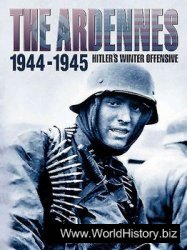For four days in May 1864, the armies of Lee and Grant skirmished and sparred along the banks of the North Anna River, 25 miles north of Richmond. An epic confrontation seemed imminent. Tension gripped the soldiers on both sides. Already that month they had endured the ordeals of the Wilderness and Spotsylvania, and had seen their comrades fall by the thousands. “How we feared,” said a Union private, “that Grant would keep sending us to the slaughter.”
By the third day, both privates and generals knew there would be no blood bath on the North Anna. The Union’s bridges led to a dead end; south of the river Grant’s soldiers were confronted by a wall of Confederate fortifications.
Confident that their commander would bypass Lee’s impregnable position, the Union troops relaxed for a time. With those soldiers was photographer Timothy O’Sullivan, who earlier in the War had often been close to the action. Now O’Sullivan had the opportunity to capture the placid beauty of the North Anna and the soldiers at ease in the middle of a hot, tough campaign. His photographs appear on these pages.
Wielding picks and spades, men of the 50th New York Engineers cut a road along the steep south bank of the North Anna at Jericho Mill, one of two major crossing points. O’Sullivan, a New Yorker, recorded most of the work done by this busy battalion from his home state.

Union guards lounge at the south end of the Chesterfield Bridge on May 25. Two days earlier, troops from General Hancock’s II Corps stormed the Confederate redoubt {left rear), silencing its six guns. The attackers lost 150 dead and wounded, but gained control of the bridge.

The rain-swollen North Anna surges over a dam at Quarles’ Mill, where General Thomas L. Crittenden’s Federal division crossed on May 24. Crittenden’s men, lacking pontoons, waded through waist-deep currents and clambered up slippery slopes to gain a foothold on the south bank.

Floating placidly on the North Anna, these two pontoon bridges were built as substitutes for a railroad bridge burned by retreating Confederates. Three brigades from II Corps crossed these spans on May 24, then retraced their steps two days later after finding the way blocked by Lee’s defenses.

Federal troops man trenches protecting a captured redan on the river’s north bank. Heavy rains on the 25th made the men miserable; water was knee-deep in the trenches despite the shelter of pup tents.

A 160-foot pontoon bridge spans the North Anna at Jericho Mill, where an attack by General A. P. Hill’s Confederates surprised troops of V Corps on May 23. Panicking Federals rushed across to the safety of the north bank (background); Union reinforcements, crossing the opposite way, had to force a passage by driving their Seeing comrades into the river.

With the ruins of a railroad bridge in the background, Federal soldiers take a refreshing swim in the North Anna. For many of the men, the lull in the fighting provided the first opportunity to bathe in several weeks.

A corduroy bridge of logs and boards spans the North Anna at Quarles’ Mill. Working feverishly despite continuous Confederate shelling, Federal engineers threw seven bridges across the river, maintained them against rushing currents and then rapidly dismantled several of them on May 27 for transport to the next battle site.

Appearing relaxed and confident, Federal troops pose on a pontoon bridge. The 1,973 Union casualties on the North Anna were concentrated among a handful of divisions; most of General Grant’s battle-weary veterans saw no action.




 World History
World History









